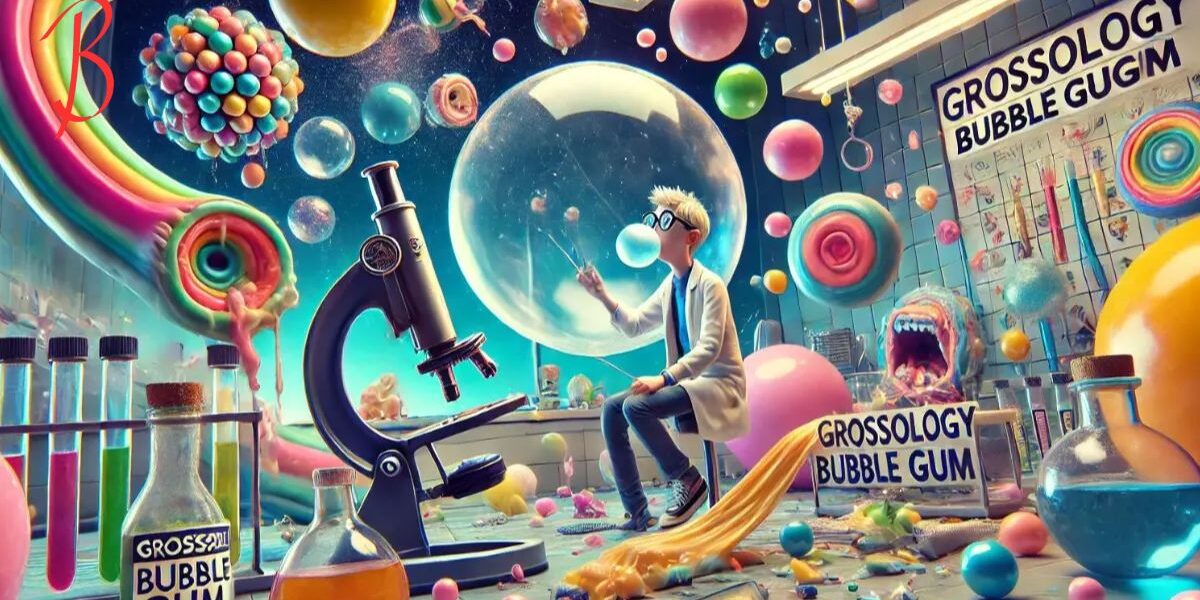Bubble gum is more than a treat to the taste buds. Behind the stretchy, chewy texture lies an interesting combination of chemistry and biology. The term “grossology” refers to the study of all things gross and icky and is often associated with the functions of the human body. How surprisingly educational and fun! When you combine this concept with bubble gum, you jump into the “grossology” of the sticky, stretchy substance that we love to chew. Well, let’s tear apart the interesting science behind that piece of bubble gum, starting with the ingredients and how it interacts with your body.
What is Grossology?
Grossology is a quirky and humorous way of exploring the science of the gross and disgusting. It takes things that might typically make people squirm — like mucus, farts, or even gum — and turns them into fascinating learning experiences. In the context of bubble gum, grossology explores how something that sticks to your shoes, and sometimes even your hair, can also be a fun experience in texture, taste, and elasticity.
The Origins of Bubble Gum
Bubble gum, as we know it today, was first invented in 1928 by Walter Diemer. This classic candy has its roots in ancient history, with ancient civilizations like the Mayans and Greeks chewing resin or tree sap. But Diemer’s modern version introduced a synthetic, elastic-like substance that allowed gum to stretch and form bubbles.
Ingredients of Bubble Gum
Bubble gum is made from a mixture of synthetic rubber (gum base), sweeteners, flavorings, and softeners. The key ingredient responsible for its chewy texture is the gum base, which is typically made from polymers like styrene-butadiene rubber or polyisobutylene. These compounds allow gum to be flexible yet resilient enough to form bubbles.
How Does Bubble Gum Work?
When you chew bubble gum, you’re working with a complex set of ingredients designed to interact with the warmth of your mouth. Let’s explore the process:
1. The Chewing Process
As you chew, your saliva moistens the gum, helping to soften it and release the flavors and sweeteners. The gum base stays intact because it’s insoluble in water (or saliva), allowing you to keep chewing for a long time.
2. Bubble Formation
The elasticity of the gum base allows it to stretch when air is blown into it, forming bubbles. When air is forced into the gum, the gum forms a thin membrane that expands, thanks to its ability to resist tearing. This is what makes bubble gum unique compared to regular chewing gum.
The Gross Side of Bubble Gum
While bubble gum is fun, it has its “gross” aspects too. Here are some of the less pleasant, but still fascinating, facts about bubble gum:
1. Sticking to Surfaces
One of the most annoying things about bubble gum is how easily it sticks to surfaces like shoes, sidewalks, and even hair. This happens because the polymers in gum base become sticky at higher temperatures, like when it’s warm outside or in your mouth.
2. Gum in Your Stomach
There’s a persistent myth that swallowing gum stays in your stomach for seven years. While this isn’t true, swallowed gum does resist digestion because of the same polymers that make it stretchy. It passes through your digestive system mostly intact but is eventually expelled without much harm.
Grossology and Bubble Gum Science for Kids
Kids love learning about the “gross” side of things, which makes bubble gum a great way to introduce them to science. Whether it’s teaching about the polymers in gum or how bubbles form, bubble gum provides a fun, hands-on way to explore chemistry and biology.
Activities to Try
- Bubble Blowing Contest: See who can blow the biggest bubble while explaining how the gum stretches due to its polymers.
- Sticky Situations: Test different methods of removing gum from surfaces like hair or fabric, exploring the properties of various cleaning agents.
- Gum vs. Chewing Gum: Compare how bubble gum reacts to chewing versus regular gum to understand elasticity and gum base differences.




